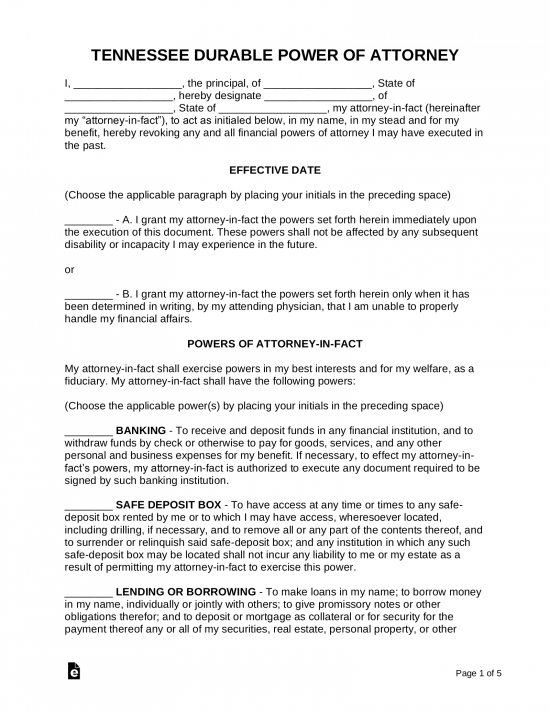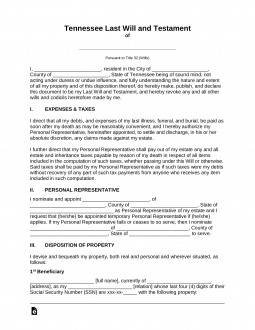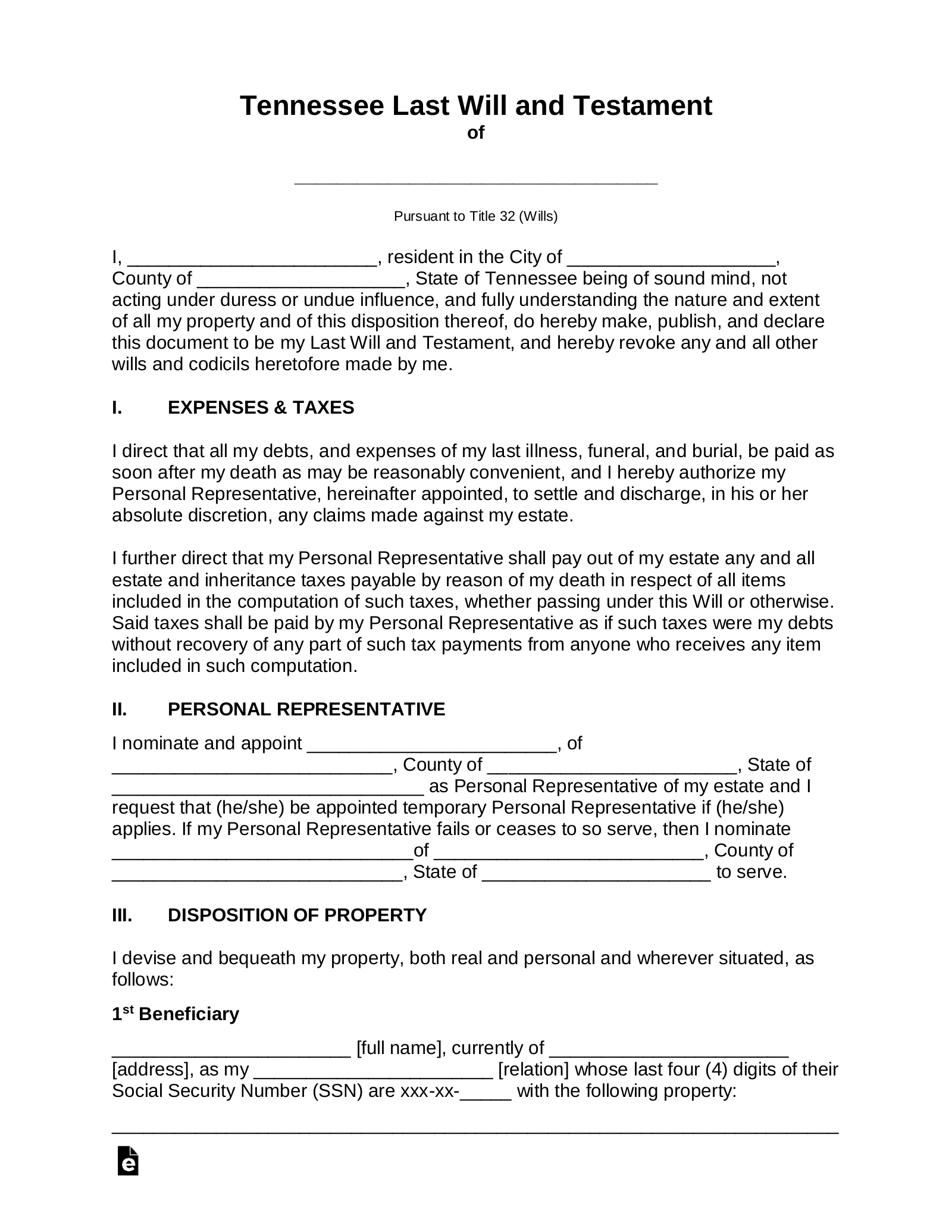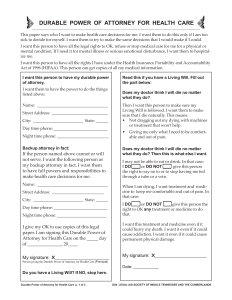Updated November 15, 2023
A Tennessee last will and testament is a legal estate-planning document that allows the testator (the person creating the will) to provide exact instructions for how they wish to have their estate distributed upon death. This can include their real and property, life insurance policies, digital assets, fiduciary accounts, cash-on-hand, and much more.
Signing Requirements
The testator must sign the will in the presence of two or more witnesses. Those witnesses must sign the will in the presence of the testator and in the presence of each other.[1]
State Definition
“Will” includes codicil.[2]
Related Forms
Download: PDF
 Durable (Financial) Power of Attorney
Durable (Financial) Power of Attorney



